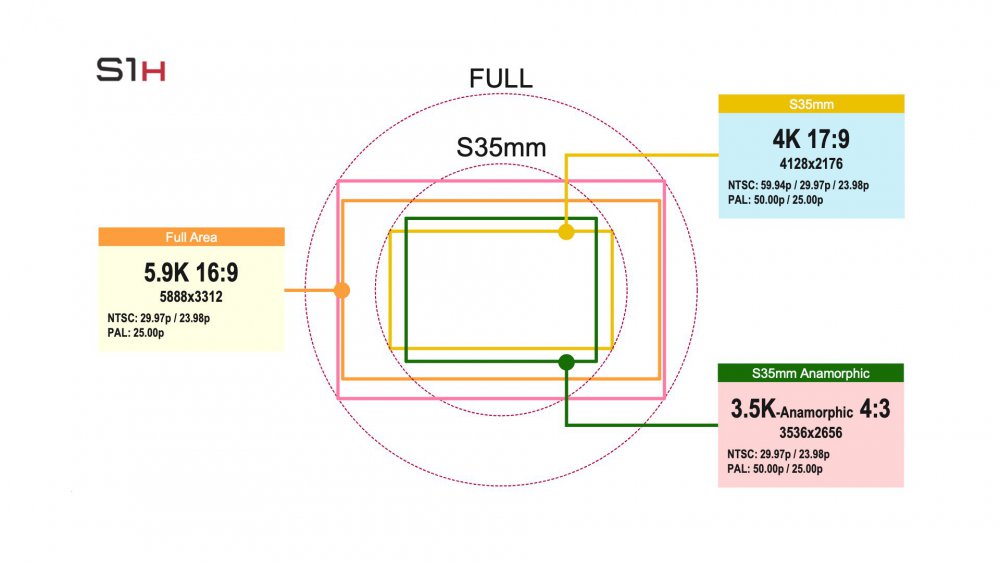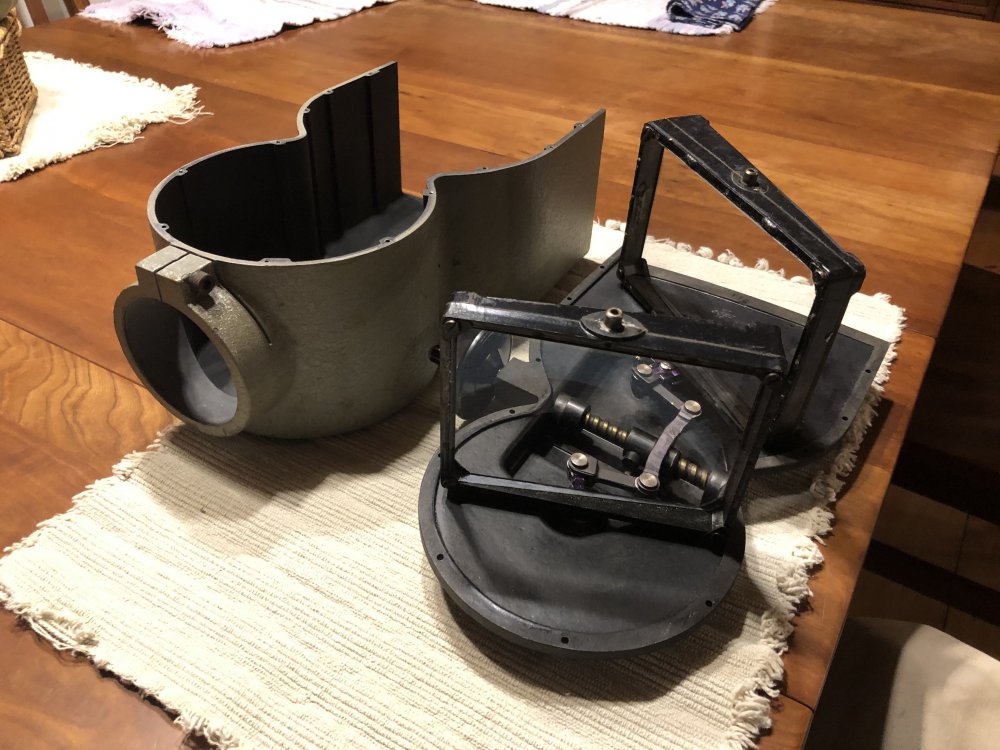
Caleb Genheimer
Members-
Posts
708 -
Joined
-
Last visited
Content Type
Profiles
Forums
Articles
Everything posted by Caleb Genheimer
-
Taking lens was Navitron 25mm f0.95, mostly around f2-2.8. I’ll preach 1.75X on 16mm until the day I die. The camera-to-dollar ratio on regular-16 versus super-16 bodies is kinda ridiculous. I just bought the absolute top quality 1.75X adapter (Kowa Inflight), and I have a crystal sync sound camera with coaxial mags and a color video tap... still all for cheaper than a S16 SR-2. That’s the REAL beauty of film. There’s no sensor difference between bodies, it’s all in the film stock. Would I absolutely love a 416, an SR-3 Highspeed, or even an XTR Prod? Absolutely and maybe some day. But if I don’t tell you what camera I shot on, can you even tell? Not really. There’s a lot of great glass out there too for cheaper simply because it’s not a PL mount body. I can get some classic Cooke and Angenieux glass in Eclair’s CA-1 mount or even in Arri STD. And C-Mount? Perfect for 16mm and very adaptable.
-
Had some footage left in a mag from another project, so I walked down to the river behind my house and used it up:
-
What next for Sigma? What would you like to see?
Caleb Genheimer replied to Andrew - EOSHD's topic in Cameras
If I were to concept a camera, here’s where it would sit: 1. A symmetrical sensor unit, something like a cross between ZCam and Sigma FP 2. A first-party detachable battery grip that’s essentially all the right-hand grip stuff usually built into DSLR/Mirrorless bodies (D-pad, scroll wheels, fn buttons, REC, etc.) The battery grip can be detached and mounted elsewhere via a cable. 3. A first-party detachable rear touch screen. Simple single-hinge 180 degrees towards the top of the camera with auto image flip. The screen can be detached and mounted elsewhere via a cable. 4. Detaching the screen reveals a V-Mount plate. 5. Dual pixel AF on sensor, with a FIZ output port on the front of the camera body, so that the camera AF can drive rail mounted focus/iris/zoom motors on any manual lens. 6. Electronic ND. 7. True full frame sensor with open gate compressed RAW internal recording up to 30fps. 8. Open gate all-I-frame LOG mode up to 60fps. 9. Open gate compressed LOG up to 120fps. 10. Dual native ISO. 11. ~5K/6K. 12. Positive Lock L-Mount or comparable large diameter rigid short FFD mount. 13. XLR Audio V-Mount stackable module with two inputs that are 32bit float capable. Bonus if it’s a SoundDevices MixPre licensed unit. This unit can provide pass-through for the rear screen or a V-Mount battery. 14. An EVF optical accessory for the detachable screen. 15. A V-Mount Stackable wireless module which supports low latency HD monitoring, multi-device (latency) Wi-Fi smartphone monitoring, camera control, and FIZ control. 16. RAW can be over USB-C to SSD, but third parties will just make dual-SSD holders that stack in the pass-through V-Mount stack, so it almost may as well be internal. 17. I’m one of those weirdos who would rather have a hard mounted sensor instead of IBIS, so... yeah. The core body kit is just brick+grip+monitor. Basically a slightly bulked Sigma FP until you break it apart. You add the stackables as needed, and bank somewhat on 3rd parties to make ergonomic solutions for grip/monitor relocation, rails, boosters, shoulder pads, FIZ motors, etc. -
The complete non-starter issue for me on all these external RAW updates over HDMI is the fact that it’s always C4K or 16:9. What’s the heckin point of a “medium format” or “full frame” RAW camera if I can’t even use the FULL frame? #anamorphicproblems Seriously though, I want to use the full sensor height. Anything else is just infuriating. I assume it’s some limitation of the HDMI hardware, either the camera’s output, the signal format, or the Atmos’ input, but that doesn’t make it less frustrating. When there’s a camera that can shoot RAW and be speedboosted into IMAX 15/70 territory, I’ll be there with bells on. Until then, my GH5S and Blackmagic Pocket 4K will tide me over just fine.
-
The New Panasonic G100 “vlogging” Camera to launch June 24th
Caleb Genheimer replied to Video Hummus's topic in Cameras
Honestly, let’s not kid ourselves. Panasonic has plenty of good cameras. I don’t give a crap if they make a few cheap duds here and there. The market will teach them right from wrong. But their true Achilles Heel is their autofocus, and at a certain point, that deficiency is going to be egregiously impossible to ignore. I hope they ditch Apple’s ProRes Raw and/or add Blackmagic Raw. DaVinci has my heart and soul, and FCPX screwed me enough times that I’m not going back down that road. If they create their own Raw, that just crowds the market. -
@Seb Fargeswhat you selling?
-
The Big EOSHD interview: Metabones lens adapters
Caleb Genheimer replied to Andrew - EOSHD's topic in Cameras
-
The Big EOSHD interview: Metabones lens adapters
Caleb Genheimer replied to Andrew - EOSHD's topic in Cameras
No biggie! The Kipon is definitely an awesome piece of kit! When it comes to putting extra glass behind already top-notch lenses, it seems only appropriate to go with the highest quality option, which is undeniably still Metabones... even considering how much better the offerings of other booster brands have gotten. Anyone not looking to chase the LF look obsessively is almost certainly better served by a fast native lens in whichever format they’re using. -
The Big EOSHD interview: Metabones lens adapters
Caleb Genheimer replied to Andrew - EOSHD's topic in Cameras
Yes, I’m aware of the Kipon! I’ll be holding out a while longer to see if Metabones offers a comparable product. From the limited review knowledge out there, the Kipon is very good but not without distortion. I also have extreme respect for Metabones’ locking mount variants. It doesn’t matter how good your optics are if the adapter wiggles, and a locking mount aim the adapter is the only way to guarantee full stability. -
The Big EOSHD interview: Metabones lens adapters
Caleb Genheimer replied to Andrew - EOSHD's topic in Cameras
L-Mount crop-fixing booster? Yeah I think they’re right to skip that particular one. However.... L-Mount medium format booster? Now there’s a different story. A Netflix-approved mirrorless camera that bites at the heels of IMAX 15/70 imaging size? Yes please and thank-you! In the words of Futurama’s Bender, “I’ll shoot my own Dunkirk, with blackjack and hookers!” -
Man, yeah. Lots of complex emotion on this for me over the last week. I’m a white Minnesotan, working 6 days a week even during COVID-19... I thought about photographing/video documenting, and I agree it is incredibly important work and that things must be seen. But my heart is broken. Just straight ripped apart. I just got home from two days In Minneapolis/St. Paul, and I’m glad I didn’t bring a camera, and I left my phone in my bag. There’s a LOT of I guess I’d call it “social justice tourism” going on, and that just sits uneasy with me. Like, people were posing with their friends and signs for selfies, and then leaving the sit-in at the capitol before it was done... even more selfies with the George Floyd mural at Cup Foods. Don’t get me wrong, it is good that those people are at least engaging on some level, but social media is already drowning in this stuff at the moment, that isn’t necessarily an efficient vehicle for change. I don’t need pictures to communicate what I’ve seen with my own eyes. I saw the entire capitol lawn filled to bursting with beautiful peaceful people all afternoon, championing full institutional overhaul of the oppressive system... which by the way was organized and led by FREAKING HIGHSCHOOL STUDENTS, who were all more articulate than yours truly. I worked alongside hundreds of my fellow Minnesotans ALL DAY yesterday as we packed food and household supplies for our neighbors in need. We were tired. We were drenched in sweat. It was beautiful. Emotions, events, words and actions are in the highest contrast in this moment. Sometimes you’ve gotta leave the camera behind and commit your full self to being present. And I must say this: while the news has been reporting both the peaceful protests and the unrest, the time devoted to each is woefully disproportionate to the time Minnesotans have been devoting to each. Yes there has been some destruction and some violence. But there is an immeasurably larger effort of peaceful demand for justice. Heres the only picture from today, snapped by a construction worker on an adjacent building and texted to one of the church food drive organizers. All of those bags of groceries were gone within half an hour. The need is real, but Minnesotans are rising to the occasion, government or no government.
-
From what I’ve seen of the Aivascope 1.75X out there, almost all the footage seems to be from the original version, and I will say although I never used that version, this MKII footage looks quite a bit cleaner. It appears at the very least that the coatings were changed to something with better performance. I suspect also either better QC, more precision in the housing, or both. I will be shooting an in-depth review at some point, but all of my cameras are currently rented out indefinitely for one of my regular client’s live-streaming needs until virus restrictions change, which will be who knows when. I don’t honestly know what it would cover FOV-wise in such a large sensor. On my BMPCC4K, it definitely clears 24mm, which is on par with the Kowa, and my Kowa won’t even manage that unless I use a massive variable diopter like the FVD-35. If I had a 22mm, I suspect it would cover with that as well, but some of that incremental focal length minutia gets deceptive with anamorphic adapters. There might be a taking lens that works well with it on medium format, but the diameter of the rear glass will be restrictive. There is certainly some measure of maths that can be done to get an idea of where to start, but in my experience, you can crunch numbers on crop factors, sensor sizes, equivalencies, aspect ratios, etc. backwards and forwards... at the end of the day, you need glass and camera in hand to test the setup for compatibility. It is likely that in theory, it works at or just eider than “normal” focal length (50mm FF equiv.,) regardless of the format. Outside of a handful of the highly sought after lenses, this is as wide as it gets for adapters 1.5X and above. The vast majority (Sankor, 16-D, Schneider, Moller, etc.) start at the long end, 58-85mm. The Aivascope 1.75X is, however, adequately sized to cover almost any lens I would get for my 16mm camera. I just need focus marks added to the Focuser-8 so I can use tape and nail proper focus reliably.
-
Andrew... get your hands on an Aivascope 1.75X MK2 (or wait for the MK3), it’s a freaking BEAST. I wouldn’t say it kicks my tunes Kowa 16-H straight in the crotch, but it sure as heck kicks it in the shins a bit. I got mine with a single focus on front for under US$800, after seeing the image it feels like highway robbery. It’s as wide as my Kowa. Anyone who’s been around the anamorphic block for a decade or so will grasp the weight of that statement.
-
I have to say, so far my Aivascope 1.75X MKII/Focuser-8 combo is performing in a manner that has me considering it as being criminally underrated. I know it’s not an Iscorama “clone” AFAIK, but their 1.5X I would assume is just as good as their other lens. I’m grabbing the Aivascope instead of my Kowa 16-H these days, and that’s saying something. Im laying low for a couple more years. Vazen is on the verge of greatness... the 40mm was a good foray, but the revised focus method in the 28mm is on par with other anamorphics that have significantly higher price tags. If they can do a S35 line of lenses with those mechanics, it will be tough to say no. They do need to take Andrew’s advice on coatings though. Their lenses render a bit modern to my eyes. I think it’s a coating/color/contrast issue. The optical rendering (bokeh etc) is very pleasing.
-
Kowa Anamorphic-35 1.75X Inflight Insights?
Caleb Genheimer replied to Caleb Genheimer's topic in Cameras
For anyone curious, here’s an update: Aivascope 1.75X MKII on 16mm. Make sure your variable diopter has focus marks, or you’ll end up with some blurry shots like I did 😬 -
Thanks!
-
Here’s my latest anamorphic adventure! Pro-tip for anyone who is considering an anamorphic rig on film: make sure your variable diopter has focus marks! Everything looked focused in the viewfinder, but it definitely wasn’t. Marks and a tape measure are your best friends.
-
Raspberry Pi Releases an Interchangeable-lens Camera Module
Caleb Genheimer replied to androidlad's topic in Cameras
I just want a board sensor that covers 16mm and has dual pixel AF so I can hack my 16mm camera apart and replace the ground glass with a CMOS and have reliable AF on a film camera. -
And here I am Sheltered in Place spending my money and time on 400’ rolls of Kodak 😂 But seriously. If Canon can (as it appears they’re claiming to) get these non cropped high res/high framerate modes working in the R5 alongside their autofocus, they’re essentially back on top. Still nobody can touch their AF. It’s been allllll the other crap that they suck at.
-
Good to know! All of my cameras are currently in use at a client’s studio, so I don’t have any way of testing these currently.
-
This is a Superscope, an RKO prism anamorphic from the mid-1950s when many systems flashed in the pan of development. There’s something really satisfying about actually snagging TWO of these for $150, and having them show up in their original boxes complete with Superscope red font box tape, and a manual still in the envelope it was originally mailed out in, post-stamped from my home state of Minnesota. Based on the pictures, I was rather worried about fungus, but they opened up easily, and are cleaning up to look brand new, a new coat of crinkle paint being the only needed exception. According to the manual, they’re good from 75mm and up (on 35mm), and can vary squeeze from 1X to 3X. There’s an additional micro adjustment screw for dialing in even squeeze across the image. Seeing as these have no focus control, I’m interested to test wether they can handle focus through, and perhaps sacrifice one as an optics donor for a more camera-friendly re-house. If all else fails, they’re quite stunning as-is, and a slice of cinema history for the bookshelf. If anyone has experience with prism anamorphics, please chime in!
-
Kowa Anamorphic-35 1.75X Inflight Insights?
Caleb Genheimer replied to Caleb Genheimer's topic in Cameras
That video is fantastic! I’m definitely going to be on the hunt for this 1.75X Kowa now. Seems like a real winner that I’d sell my other scopes to get ahold of. I’m FLOORED that more people aren’t talking about the 1.75X Aivascope though. Just the fact that it is currently produced for the anamorphic market and that it goes so wide and is so small is crazy. There’s very little out there and most of it seems to be about his initial lens, but this Version 2 seems very sharp with good rendering. -
Kowa Anamorphic-35 1.75X Inflight Insights?
Caleb Genheimer replied to Caleb Genheimer's topic in Cameras
Cool, thanks! I saw your vid out there, it seemed like a prime example from someone who rigged it up properly. If you are ever considering parting with another one, I have a good home for it. Currently getting the ball rolling on my 16mm camera with the Aivascope which is also one of the best pieces of glass I’ve found, except for the fact that it it is a “baby” type scope so it may limit taking lens choices. It seems to support the same FOV taking lens as a 16-H, possibly even a touch wider. Both can truly cover a standard set of primes on any format, which is rare on the wide end for high squeeze factor adapter anamorphics. I’m close I think to having my 16mm camera adapted to take Micro 4/3 glass, and my calculations tell me I should be able to use both the Aivascope and the 16-H on that format with the Voightlander set from 17.5-42.5mm (so excluding the 10.5mm.) The center image on those lenses is excellent, even wide open, so on 16mm they will look fantastic. But the large front elements might not play so well with the baby scope. -
Anyone used one? Have one? I’m on a 1.75X journey right now with an Aivascope, but there’s still something about my Kowa 16-H. Wondering if the “Inflight” 1.75X might be a middle ground. I’ve heard rumors that the mechanics are not as robust as some might like.







